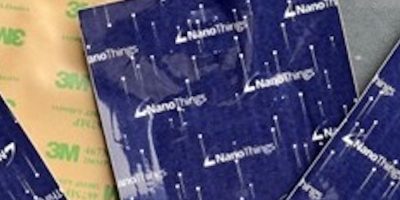Challenging the very fabric of our thinking about wearables, two university projects have experimented with polymers, weave, and weft to create materials that have a multitude of practical uses, writes Caroline Hayes.
Research programmes into smart fabric which respond to heat offer new ways to deal with bumps and scrapes with material that shape shifts for self-repair.
The first project is Canada’s University of Waterloo, where a team has developed a smart material, believed to be the first to respond to two different stimuli – heat and electricity.
The ability to respond to two different stimuli opens up potential applications for clothing which can warm up when the wearer goes from one environment to another. An example would be clothes that can warm up on the walk to work on a cold winter morning.
The smart material is made from polymer nano-composite fibres, created from recycled plastics. The resulting combination of engineered polymer composites and stainless steel can change its colour and shape when stimuli is applied. For non-wearable applications, it can be used in vehicle design, for example for car bumpers to regain their original shape after a collision.
Latest News
IMU is equipped with six DoF sensor to measure slow and fast motion
IMUs (inertial measurement units) from Epson now include the M-G370G, which has been added to the company’s portfolio.
Small and versatile geo-location tracker has temperature sensor
Netherlands based SkyNet IoT claims that the LoRaWAN NanoTag is the smallest, most affordable, and most versatile Geo-location tracker and temperature sensor with international LoRaWAN coverage.
Compact LTE-M / NB-IoT module by u-blox has 2G fallback capability
The LEXI-R4 is a compact module that has been customised for applications where space is limited. It has dimensions of 16 x 16mm and supports all LTE-M and NB-IoT bands with an RF output power of 23dBm. It also has the possibility to operate on a 2G network. Typical applications are small asset trackers, such as pet and personal trackers, micromobility devices and luggage tags. It is also able to encompass larger applications, such as alarm systems, vending machines and stolen vehicle recovery systems, advised u-blox.
About Weartech
This news story is brought to you by weartechdesign.com, the specialist site dedicated to delivering information about what’s new in the wearable electronics industry, with daily news updates, new products and industry news. To stay up-to-date, register to receive our weekly newsletters and keep yourself informed on the latest technology news and new products from around the globe. Simply click this link to register here: weartechdesign.com







